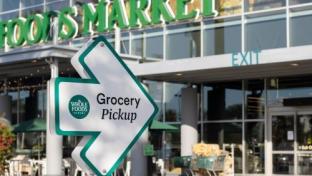Grocery E-Commerce: Five Mistakes to Avoid
More consumers are opting to order groceries online because it’s convenient or merely out of curiosity. So it’s no surprise that grocers are either launching or expanding the service. Either they offer this option, or their shoppers will look elsewhere.
I recently researched the growth of grocery e-commerce. Experts told me five mistakes that grocers must avoid. Some are for newbies and are fundamental, while others are more complex. Here is the list:
Rushing in: If a grocer’s competition is offering grocery ordering and delivery, it is imperative to get started. But rushing in and not investigating the options available may result in a negative customer experience if the wrong service is chosen. Here are the choices: Work with a third party or do it alone, home delivery or curb-side pick-up, ordering by PC only or PC and mobile. What do the shoppers want?
Not Moving Fast Enough: While it is important not to rush into grocery e-commerce, it is equally important to forge ahead once due diligence is complete. The most profitable shoppers – dual-income households, for example – often choose convenience over price. Ordering groceries on a PC must be accompanied with a mobile solution because that device is the future for connected consumers. Consider adding a quick-response warehouse fulfillment as a back-up to in-store picking to prevent out of stocks.
Trying to Duplicate the In-Store Experience Online: What happens in store stays in store, while online should be a different customer experience. It is difficult to duplicate in-store impulse items online. Not all products, such as delicate produce items, can be delivered safely to the home.
Making It Difficult for the Shopper to Buy: Grocers will get tripped up by poor customer interfaces, inefficient order deliveries, and lack of engagement at all touchpoints. Consider partnering with a third-party delivery service rather than curbside pick-up if shoppers prefer such an option. Make sure the service is professional in appearance and service, and has a proven track record.
Failing to Ensure Data Assets Are Current and in Sync: Delivering products quickly and efficiently enables grocers to generate revenue earlier, increase margins and establish themselves as a leader in e-commerce. By using a data management solution, grocers can:
- Streamline the process of on-boarding product information from suppliers and partners
- Centrally cleanse and manage information
- Allow for branding the information
- Feed all business systems that need to consume that information.
“In the future, there will no longer be a single supermarket shopping experience, but rather a collection of different experiences that will meet the specific needs of shopper groups in different locations,” predicts Graeme McVie, VP/GM of business development for Precima. “Grocers will have to stay ahead of these changing needs as retail continues to evolve.”
Not doing so is the biggest mistake of all.


